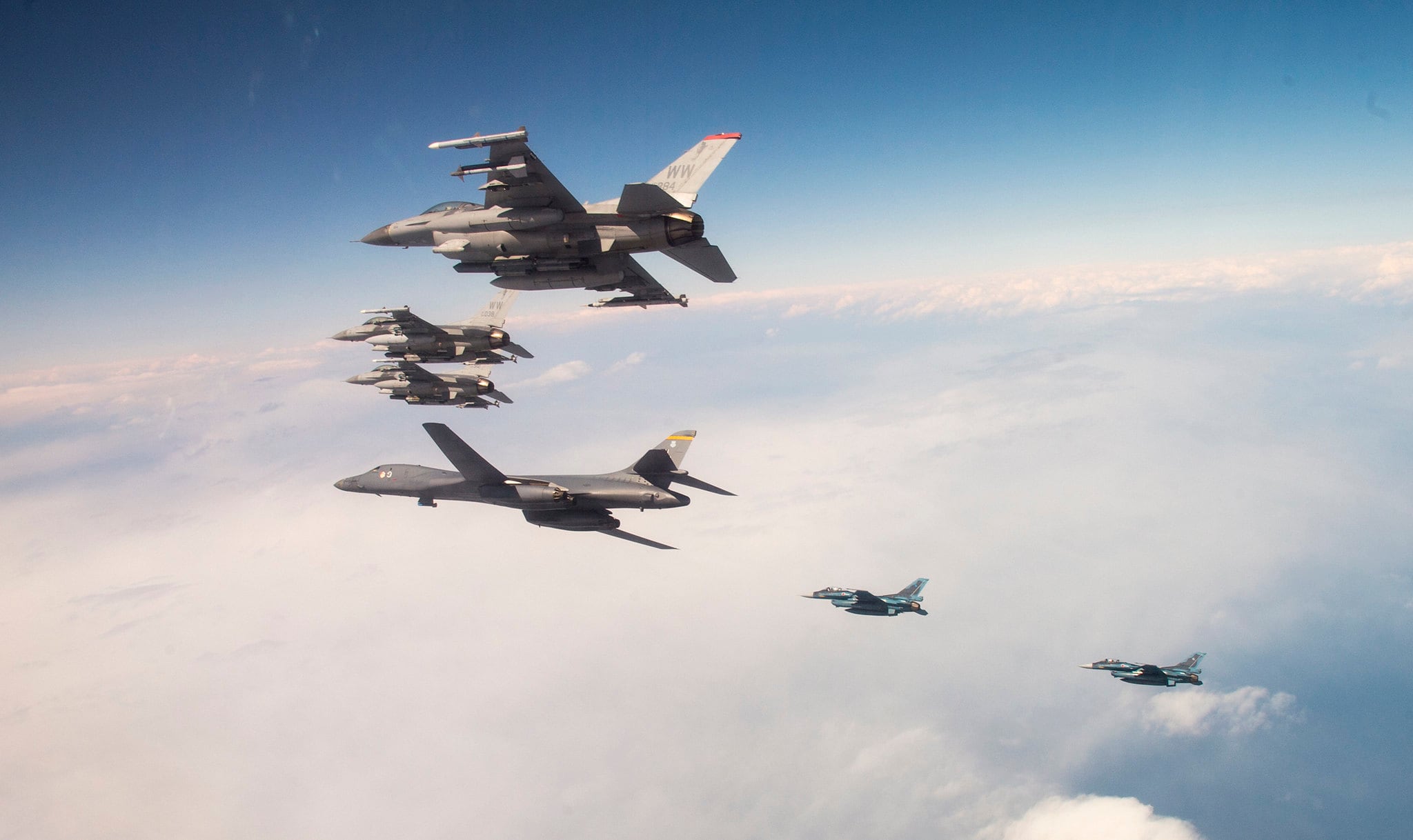Strategic bombers are back at Andersen Air Force Base in Guam — less than a month after the Air Force ended its Continuous Bomber Presence mission at Andersen.
According to the service, a total of four B-1B Lancers and roughly 200 airmen from the 9th Bomb Squadron based out of Dyess Air Force Base in Texas deployed to Andersen on May 1 for a bomber task force rotation.
“Our wing has conducted, and participated in, a variety of exercises over the last year to ensure we are primed for large-scale missions such as this one,” Col. Ed. Sumangil, 7th Bomb Wing commander, said in an Air Force news release. “We’re excited to be back in Guam and proud to continue to be part of the ready bomber force prepared to defend America and its allies against any threat.”
The Air Force did not say how long the deployment will last, but it comes as the service is implementing shorter deployments under the dynamic force employment concept. That’s designed to promote operational unpredictability in keeping with the National Defense Strategy unveiled in 2018, the service said.
As a result, the Air Force Global Strike Command announced on April 17 that strategic bombers would no longer conduct longer, routine rotations out of Andersen as they have done since 2004. According to online military aircraft tracker Aircraft Spots, five B-52Hs had left Guam and were headed to Minot Air Force Base in North Dakota on April 16.
Even so, Air Force Global Strike Command noted that this change didn’t mean strategic bombers would remain absent from the Indo-Pacific region.
“U.S. strategic bombers will continue to operate in the Indo-Pacific, to include Guam, at the timing and tempo of our choosing,” Air Force Global Strike Command said in a statement.

In recent weeks, the Air Force has had B-1s perform multiple missions in the Indo-Pacific region. For example, B-1B Lancers from the 28th Bomb Wing based out of Ellsworth Air Force Base in South Dakota conducted bilateral and theater familiarization training near Misawa in Japan with U.S. Air Force F-16 jets and Japanese F-2s and F-15s on April 22.
A week later two B-1B Lancers also from Ellsworth participated in a sortie over the South China Sea on April 29.
“The B-1 provides all of the training opportunities which the B-52 [Stratofortress] provided, plus the ability to train to advanced stand-off, anti-surface warfare with [Long Range Anti-Surface Missiles],” Lt. Col. Frank Welton, PACAF’s chief of operations force management, said in an Air Force news release.
“The B-1 is able to carry a larger payload of Joint Air-to-Surface Standoff Missiles and a larger payload of 2,000-pound class Joint Direct Attack Munitions,” Welton said. “Additionally, the B-1 is able to carry the LRASM, giving it an advanced stand-off, counter-ship capability. It also has an advanced self-protection suite and is able to transit at supersonic speeds to enhance offensive and defensive capabilities.”
U.S. Strategic Command has carried out bomber task force missions since 2014, and the last bomber task force deployment occurred in January 2019 when three B-2 Spirits from Whiteman Air Force Base in Missouri deployed to Hawaii.
B-1s were most recently deployed to Andersen in 2017.





